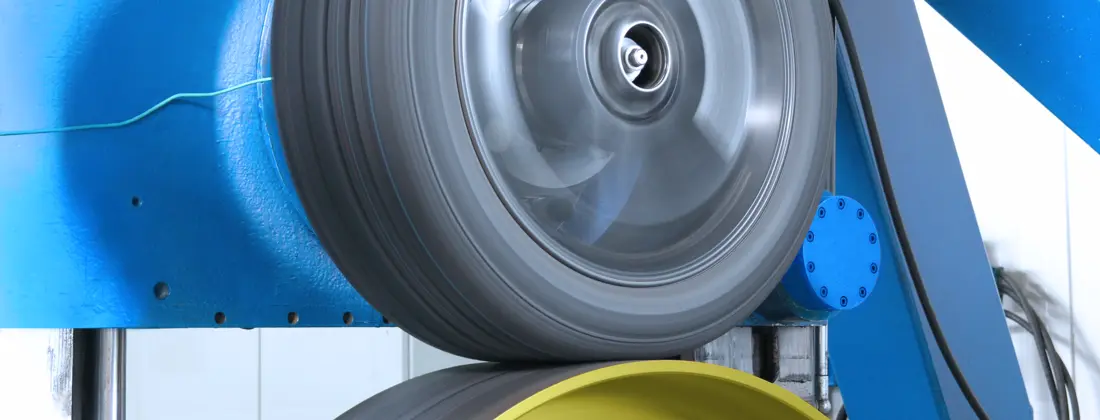JIS D4231 Tyre Strength Endurance Test
The JIS D4231 tyre strength endurance test is a critical procedure used to assess the durability and structural integrity of tyres under prolonged stress. This test is essential for ensuring that tyres meet rigorous standards set by Japanese Industrial Standards (JIS). The primary objective of this test is to simulate real-world conditions, specifically focusing on the resilience of tyres against fatigue-induced damage during extended usage.
The test involves subjecting a tyre specimen to repeated loading cycles until it either fails or reaches a predetermined number of cycles. This process helps identify potential weaknesses in the tyre's construction, such as bead wire quality, ply plies, and carcass integrity. By performing this test, manufacturers can ensure that their tyres are not only compliant with JIS D4231 but also offer superior performance across various driving conditions.
One of the key advantages of the JIS D4231 tyre strength endurance test is its ability to replicate real-world stress scenarios. The test simulates the constant loading and unloading that tyres experience during long journeys, providing valuable insights into how a tyre will perform over time. This information is invaluable for quality managers and compliance officers who need to ensure product reliability and safety.
The testing apparatus used in JIS D4231 includes a sophisticated fatigue tester capable of applying controlled loads at specified frequencies and amplitudes. The test setup typically involves mounting the tyre on a specially designed rig that allows for precise control over loading parameters. The specimen is subjected to a series of load cycles, each with varying magnitudes and durations, to mimic actual driving conditions.
The acceptance criteria for this test are stringent, ensuring that only tyres meeting JIS D4231 specifications can pass the evaluation. Failures during testing indicate potential issues in the tyre's design or manufacturing process, prompting further investigation and corrective actions. This ensures that tyres produced by compliant manufacturers meet high standards of safety and performance.
Manufacturers who undergo this test benefit from enhanced brand reputation and increased market competitiveness. By demonstrating compliance with JIS D4231, they assure customers of the tyre's durability and longevity, which is crucial for maintaining customer satisfaction and loyalty. Additionally, successful completion of this test can lead to improved product design and engineering, further enhancing tyre performance.
The results from the JIS D4231 tyre strength endurance test are comprehensive, providing detailed insights into various aspects of tyre performance. These include load-carrying capacity, resistance against fatigue-induced damage, and overall structural integrity. The test also helps identify areas for improvement in future product iterations, ensuring continuous innovation and enhancement.
Applied Standards
| Standard | Description |
|---|---|
| JIS D4231 | Japanese Industrial Standard for tyre strength endurance testing. |
Why Choose This Test
- Precise simulation of real-world driving conditions.
- Comprehensive assessment of tyre durability and structural integrity.
- Stringent acceptance criteria ensuring high-quality tyres.
- Enhanced brand reputation through compliance with JIS standards.
Environmental and Sustainability Contributions
The JIS D4231 tyre strength endurance test plays a crucial role in promoting environmental sustainability by ensuring that tyres are built to last longer. By identifying potential weaknesses early in the manufacturing process, this test helps reduce waste and extend the lifespan of tyres. This not only benefits consumers through cost savings but also contributes positively to the environment by reducing the need for frequent tyre replacements.
Additionally, the test encourages manufacturers to innovate and improve tyre design, leading to products that are more efficient in fuel consumption and have lower emissions. By choosing tyres that meet JIS D4231 standards, consumers can contribute to a greener future by reducing their carbon footprint and supporting sustainable practices.





